My top goal was to attract a Cardinal when I started my bird feeding hobby. Cardinals are stunning birds and hold a special place in my heart. When my Grandpa passed, I still remember seeing a bright red Cardinal in my backyard that reminded me of him. They’ve been special to me ever since.
The Cornell Bird Lab puts it best: “The male Northern Cardinal is perhaps responsible for getting more people to open up a field guide than any other bird. They’re a perfect combination of familiarity, conspicuousness, and style: a shade of red you can’t take your eyes off.”
Thankfully, Northern Cardinals are actually easy to draw into your yard with a few steps. As long as you live in their range! I started bird feeding during the pandemic in 2020 and now regularly have male and female Northern Cardinals stopping by my feeders year-round.
First Things First – Get to Know the Range of Northern Cardinals
Cardinals are common at bird feeders in their range. They’re often found in woodland edges, the suburbs, swamps, city parks and even some deserts. You can even spot them in Hawaii. I was surprised to hear their familiar calls during my honeymoon there!
While they are a common bird, there are a few things you can do to have a high chance of drawing in these awe-inspiring birds to your yard.
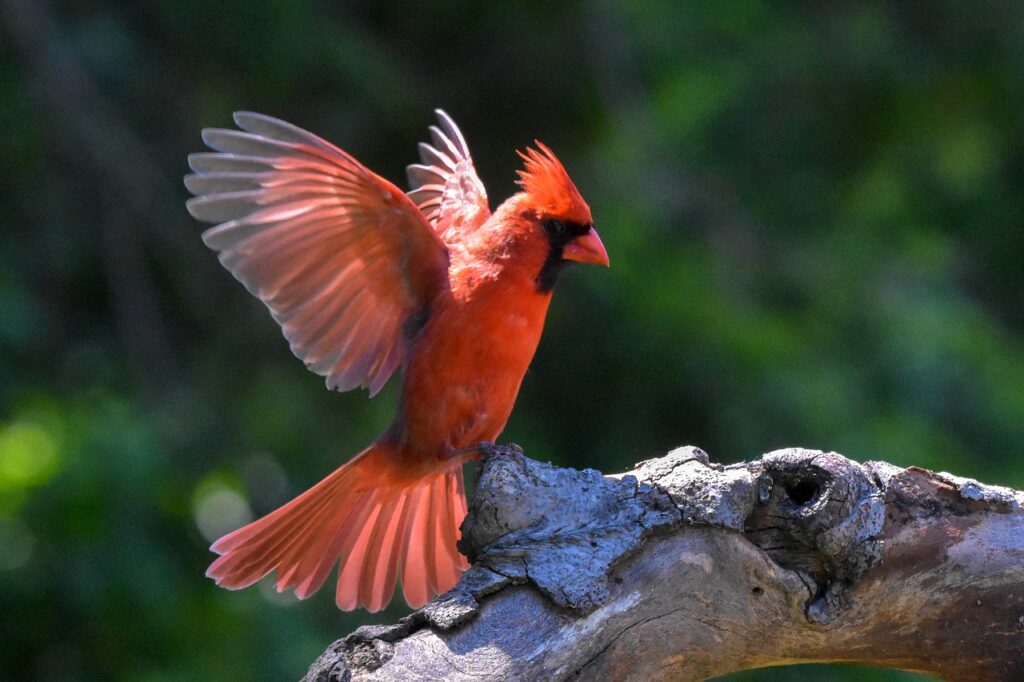
1. The Best Bird Seed for Cardinals
The best bird seed for Cardinals is black oil sunflower seed. This is my top pick from personal experience, which is also backed by the Cornell Bird Lab and Audubon. Cardinals have thick bills that they use to pry open seeds. Perfect for sunflower seeds!
An added bonus: Sunflower seeds will attract the largest variety of birds to your yard compared to anything else. It’s also a cheap bird seed to buy. Here’s a list of other common feeder birds that love sunflower seed:
- Blue Jays
- Chickadees
- Finches
- Grosbeaks
- Magpies
- Nuthatches
- Pine Siskins
- Red-Bellied Woodpeckers
- Redpolls
- Titmice
- Sparrows
Want proof? Here’s a video of a female Northern Cardinal eating sunflower seeds from my apartment balcony in the winter!
My top Amazon bird seed choice for Cardinals is Meadow Ridge Farms Black Oil Sunflower seed. I buy the 40-pound bag and it lasts me months. It’s popular with a ton of my feeder birds and comes with no filler seeds or sticks. I’m also biased because it’s locally sourced from Minnesota, my home state.
Meadow Ridge Farms Black Oil Sunflower Bird Seed
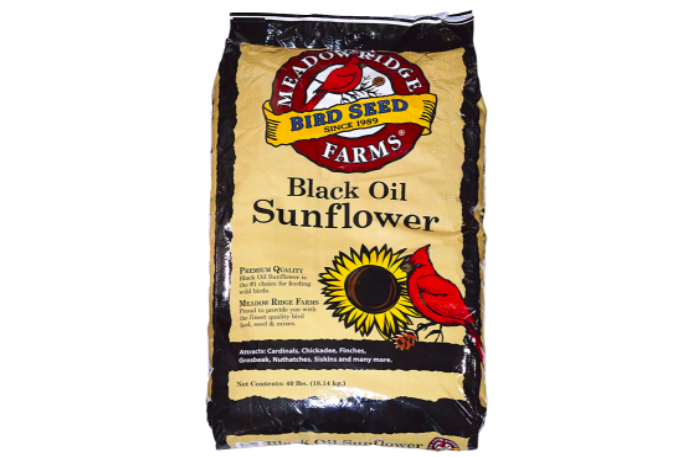
Related: Read My Ultimate Bird Seed and Bird Food Guide
Cardinals also enjoy safflower seed, a great alternative if you’re having issues with squirrels. Safflower has a bitter taste and squirrels tend to leave it alone. It also has a thick shell, making it hard for annoying birds like House Sparrows, Starlings and Grackles to get into. It’s a little pricey, but I’ve seen Cardinals go especially bananas for golden safflower seed, which has slightly higher oil, fat, and protein content compared to white-shelled safflower.

You can buy a Cardinal birdseed blend that offers an 80/20 mix of sunflower and safflower seeds too. This Wagner’s Cardinal blend was the first I ever bought and I’ve had a lot of luck with it (a ton of other birds also love it!)
Click here to purchase Wagner’s Cardinals Blend

An economical option for birdseed is at Costco. This 30-pound bag of Cardinal and Songbird Blend is typically around $20-$30 (I’ve seen it on sale too). That’s the best value I’ve seen! I almost always have a bag of it on hand. It’s also become very popular for my local Chickadees and House Finches.
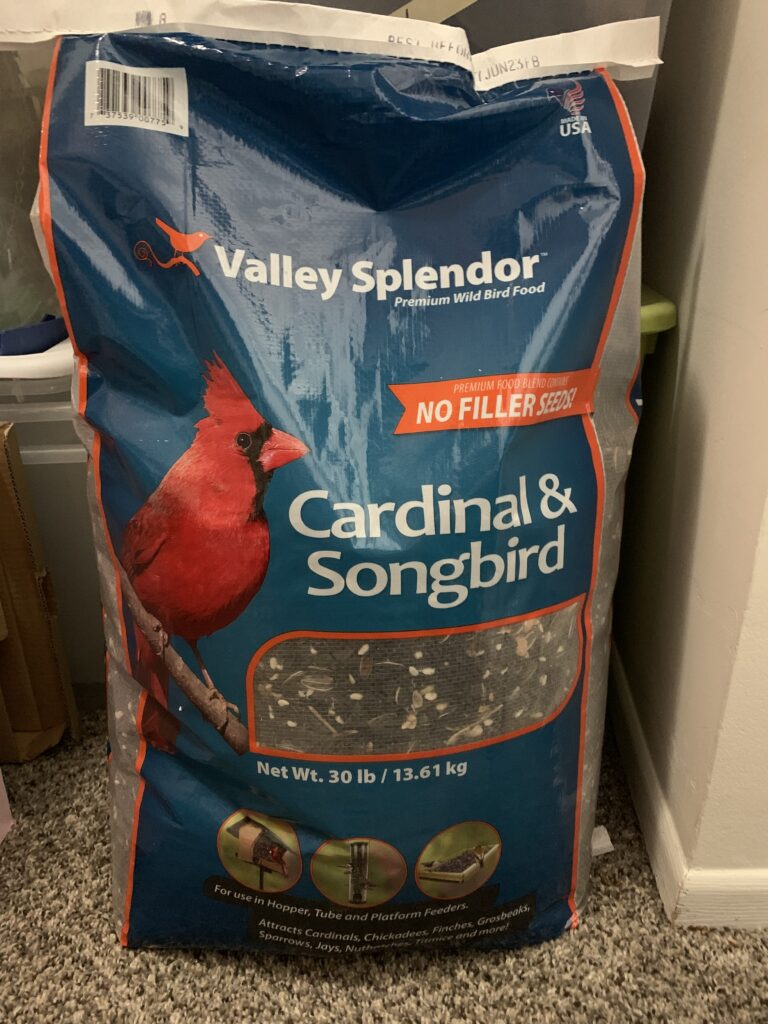
Cardinals also enjoy eating peanut bits, suet (on occasion), cracked corn, and millet. I recommend adding suet and peanuts to your feeding station simply to increase your chances of Woodpeckers, Blue Jays, Nuthatches, and other birds.
Related: The Definitive Bird Seed Power Rankings
2. Put Seed on the Ground for Cardinals
Want to know a secret? You don’t even need a bird feeder for Cardinals. They’re naturally inclined to eat seed straight from the ground.
If you’re looking for a neater option, a simple ground feeder (like the one linked below) is an easy (and cheap) option for Cardinals and other birds.
Kaytee Ground Bird Feeder Tray

However, there’s a significant downside to this approach. Putting seed on the ground is almost certain to attract squirrels, mice, chipmunks, and all sorts of critters. If you live in a rural area with a lot of space, this probably isn’t a big concern for you. However, for city/suburban bird feeders, you may want to try a different approach…
3. The Best Bird Feeders for Cardinals
Want to avoid the mess (and critters) that comes with having a ground feeder? Get a feeder that you can hang or elevate that Cardinals will enjoy!
The key thing to remember is that cardinals are large song birds (7 to 9 inches long) and will need something big enough to support them. My first recommendation for a Cardinal bird feeder would be to set up a fly-through tray feeder on a sturdy post (if you have space for it).
JCs Wildlife Medium Poly Fly-Thru Bird Feeder
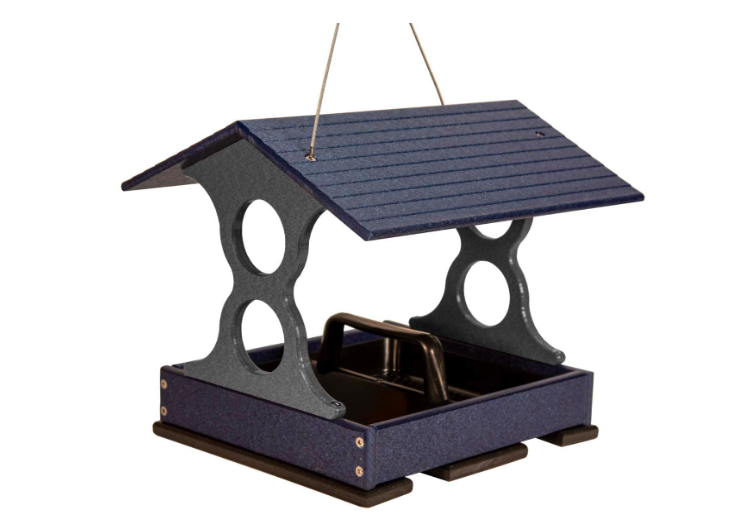
If you’re looking for something simple and more space-conscious, a hanging platform feeder is also a good choice.

A squirrel-proof feeder can also be a game changer if you’re dealing with critters eating up all of your bird seed. I’m currently using this squirrel-buster bird feeder that I’ve had a lot of success so far. It’s been a completely squirrel-proof bird feeder for me!
Squirrel Buster Standard Squirrel-proof Bird Feeder w/4 Metal Perches

If it’s in your price range (and if you’re looking for more entertainment…) you can also buy a feeder big enough for Cardinals that will literally spin when squirrels try to eat from it. I’ve heard great things about investing in a Droll Yankee squirrel-proof feeder:

Related: 5 Tips to Attract Chickadees to Your Bird Feeder
4. Offer a Bird Bath or Water Source
This is a universal tip for attracting more birds to your yard and Cardinals are no exception.
Cardinals don’t migrate. So, if you live in an area with harsh winters like I do, a heated bird bath is especially welcome by Cardinals when it’s cold out and open water is hard to come by.

If you’re in the market for a bird bath, here’s a well-reviewed and affordable option from Amazon. In the winter, you can also add in a bird bath heater to keep the ice away.
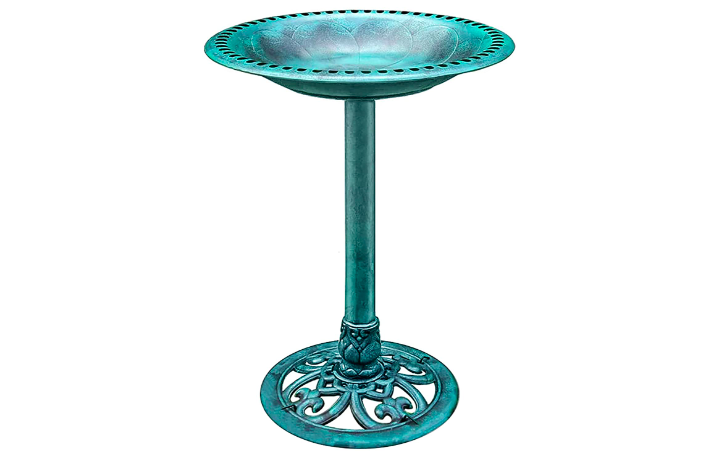
5. Place Your Feeder Near a Tree or Brush
Cardinals are skittish birds and will want to scout out any feeder. Birds in general want to feel safe and protected when they eat. Avoid putting your feeder in a wide-open space where cardinals will be exposed to potential predators. Cardinals especially love evergreen trees, which give them a lot of options for shelter.
Aim to put your feeder near trees or brushes. At the same time, try to strike a balance so that squirrels can’t easily jump to your feeding station (this is less of a concern if you buy a squirrel-proof feeder). Squirrels can jump roughly 10 feet with ease!
To recap, if you’re new to bird feeding and want some cardinals, I would:
- Buy black-oil sunflower seed
- Put it on the ground or in a squirrel-proof hanging feeder (near trees or shrubs)
- Add a water feature near your feeding station
- Extra credit: Also offer safflower seed, peanuts, and suet
Related: How to get Baltimore Orioles Visiting Your Bird Feeder
Bonus Tips
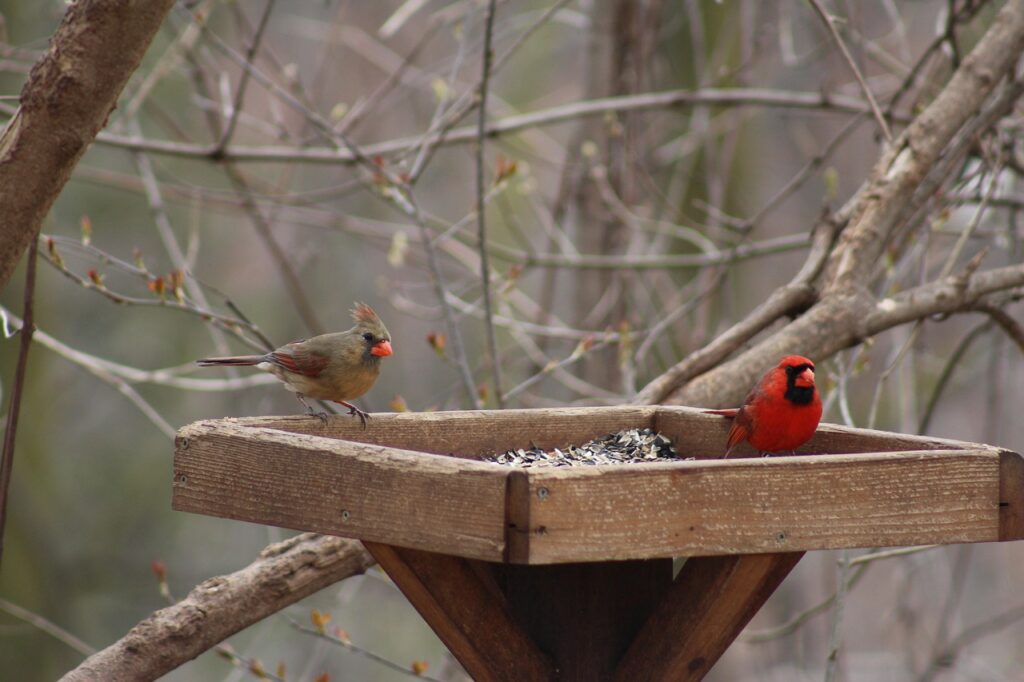
Want to further your chances at regularly getting Cardinals in your yard? Here are some tips I found from other blogs and experts.
Encourage nesting sites: The PerkyPet bird feeder website recommends having dense native plants or shrubs in your yard to encourage Cardinal nesting. They won’t use nesting boxes or bird houses.
Avoid using fertilizers and chemicals on your yard whenever possible. This is a universal tip from Cornell to bring more birds to your yard and feeders.
“The continent’s most widely used insecticides, called neonicotinoids or “neonics,” are lethal to birds and to the insects that birds consume. Common weed killers used around homes, such as 2, 4-D and glyphosate (used in Roundup), can be toxic to wildlife, and glyphosate has been declared a probable human carcinogen”
Plant flowers Cardinals enjoy. I love this tip that I found on the Birdwatching Tips blog. You can plant sunflowers to give Cardinals another food option. Planting native flowers will also draw in more insects to your yard, which they also enjoy eating!
Leave any questions and comments you have below. Please consider sharing this story or telling a friend about it if it helped you. It means a lot to me!
Related: How to Attract Hummingbirds to a Feeder in Just Three Steps
Disclaimer: Some links found on this page might be affiliate links. If you click an affiliate link and make a purchase, I might earn a commission. As an Amazon Associate I earn from qualifying purchases.
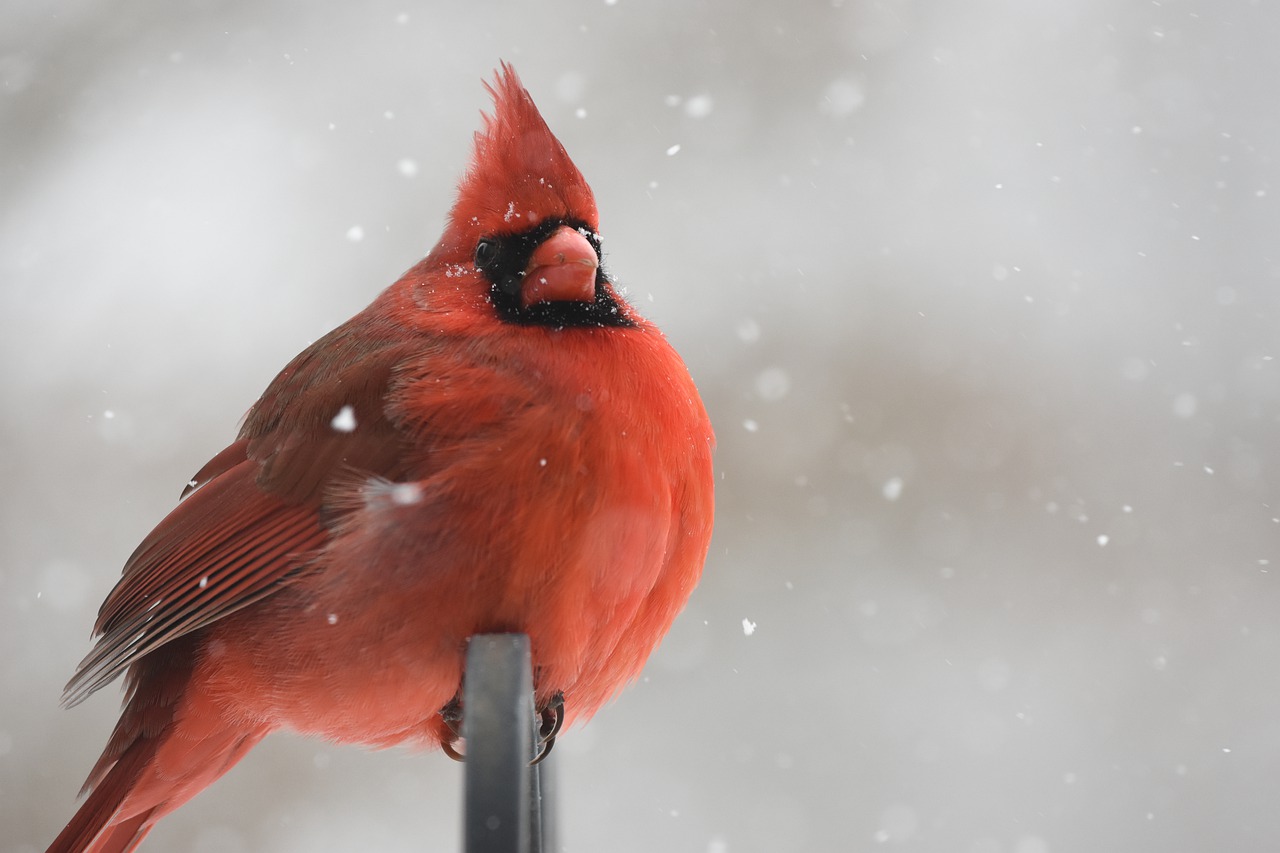
Great Blog Dan!!! I love Cardinals as well….with Rose Breasted Grosbeaks and Indigo Buntings being in my top three!
Thanks, Mom! I’m really hoping I can draw in some Grosbeaks this summer. They eluded me last year!
Pingback:The Definitive Bird Seed Power Rankings - BIRD BITES
Pingback:Get Started with Bird Feeding in Four Steps - BIRD BITES
Pingback:Ranking the Effectiveness of Squirrel Bird Feeder Deterrents - BIRD BITES
Pingback:My Experience and Review of Cole’s Flaming Squirrel Seed Sauce - BIRD BITES
Pingback:How to get Baltimore Orioles Visiting Your Bird Feeder -
Pingback:Birds Choice Cedar Hopper Feeder Review – Should You Buy It? - BIRD BITES
Pingback:The Best Bird Seed for Cardinals - BIRD BITES 2022
Pingback:The Ultimate Guide to Attract Woodpeckers to Your Bird Feeders - BIRD BITES
Pingback:My Review of Wild Bird’s Unlimited Bark Butter – Everything You Need to Know - BIRD BITES
Pingback:How to Attract Blue Jays to Your Bird Feeder – Everything You Need to Know - BIRD BITES
Pingback:How to Attract Minnesota Birds to Your Feeders (With Photos) - BIRD BITES
Pingback:The Ultimate Bird Seed and Bird Food Guide (With Photos) - BIRD BITES
Pingback:6 of the Best Large Bird Feeders Money Can Buy - BIRD BITES
Pingback:22 Unique Cardinal Facts You Didn’t Know About - BIRD BITES
Pingback:How to Attract 30+ Wisconsin Birds to Your Feeders (With Photos) - BIRD BITES
Pingback:10 Birds that Love Eating Mealworms (With Photos) - BIRD BITES
Pingback:Three Essential Late Fall Bird Feeding Tips - BIRD BITES
Pingback:The Proven Best Bird Seed for Blue Jays - BIRD BITES
Pingback:Product Review: My New Favorite Squirrel-Proof Bird Feeder - BIRD BITES
Pingback:Discover the Most Common State Birds in the United States - BIRD BITES
Pingback:5 Bird Feeder Livestreams That Will Capture Your Attention - BIRD BITES
Pingback:11 Birds That Like Eating Sunflower Seed (With Photos) - BIRD BITES
Pingback:How to Attract 30+ Iowa Birds to Your Feeders - BIRD BITES
Pingback:How to Attract 30 North Dakota Birds to Your Feeders - BIRD BITES
Pingback:How to Attract 28 South Dakota Birds to Your Feeders - BIRD BITES
Pingback:How to Attract 30+ Michigan Birds to Your Feeders - BIRD BITES
Pingback:How to Attract 28 Indiana Birds to Your Feeders - BIRD BITES
Pingback:How to Attract 28 Ohio Birds to Your Feeders - BIRD BITES
Pingback:How to Attract 21 Vermont Birds to Your Feeders in the Winter - BIRD BITES
Pingback:How to Attract 28 Kentucky Birds to Your Feeders - BIRD BITES
Pingback:10 Birds That Like Eating Safflower Seed (With Photos) - BIRD BITES
Pingback:Shopping Guide: The 4 Best Smart Bird Feeders for Sale Online - BIRD BITES
Pingback:14 Birds That Like Eating White Millet - BIRD BITES
Pingback:October 30 – November 5 Minnetonka, Minnesota Bird Feeder Counts and Notes - BIRD BITES
Pingback:This Tray Bird Feeder is Cheap and Draws in Birds…Just Don’t Get One with Paint - BIRD BITES
Pingback:How to Attract 28 Texas Birds to Your Feeders (With Photos) - BIRD BITES
Pingback:How to Attract 27 Oklahoma Birds to Your Feeders (With Photos) - BIRD BITES
Pingback:Review: A Cheap Bird Seed Cardinals Will Love - BIRD BITES
Pingback:How to Attract 27 Nebraska Birds to Your Feeders (With Photos) - BIRD BITES
Pingback:How to Attract 29 Kansas Birds to Your Feeders (With Photos) - BIRD BITES
Pingback:Review: A Cheap Bird Seed Cardinals Crave on Amazon - BIRD BITES
Pingback:How to Attract 31 Louisiana Birds to Your Feeders (With Photos) - BIRD BITES
Pingback:How to Attract 30 Arkansas Birds to Your Feeders (With Photos) - BIRD BITES
Pingback:How to Attract 28 Pennsylvania Birds to Your Feeders - BIRD BITES
Pingback:How to Attract 29 Virginia Birds to Your Feeders (With Photos) - BIRD BITES
Pingback:Review: A Quality Bird Seed Cardinals Will Love - BIRD BITES